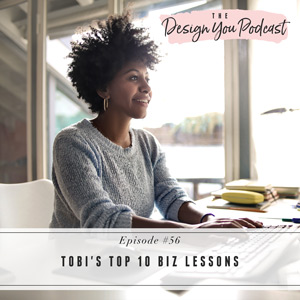
We’re 12 short weeks away from the middle of summer. Do you have a plan for these next 12 weeks? Even if you don’t, I want to help you feel confident and proud when you get there of all the things you’ve accomplished, and I’m going to do that by sharing my top 10 business tips.
These 10 things I’ve learned so far have really transformed everything for me in the best way possible, and I know they’re going to impact the way you show up for yourself so that you end up with the results you really want in your life and business. Being creatives and entrepreneurs can be tough at times, and I’m going to help you plan the path to your goals.
Listen in today for a super valuable episode with snippets of actionable steps you can take to reach your big, ambitious targets for 2019. I’m in a place where everything I do brings me joy, and I want the same for you too!
If you loved this episode or have any questions, feel free to reach out to me on social media or leave me a rating and review on iTunes! If this podcast is making a difference for you, I’d love your help to spread the word so that others just like you can get the help they need.





